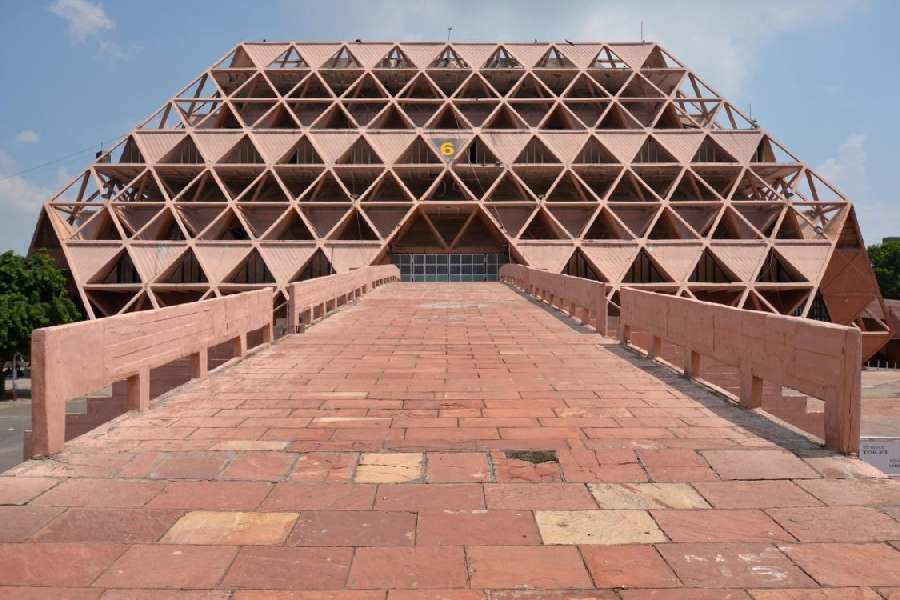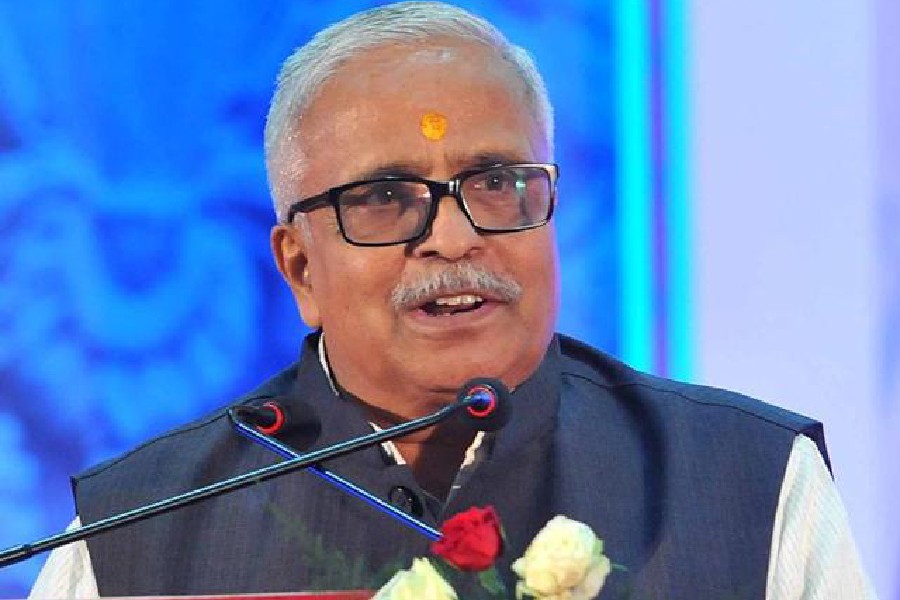In the wake of the G20 Summit, which Delhi’s citizens will remember mainly for the shutting down of New Delhi for the safety and convenience of its delegates and the greater glory of Narendra Modi, it would be useful to remember another great tamasha that happened half-a-century ago.
I’m not old enough to remember the Asian Games held in Delhi in 1951 but the great trade fair of 1972 is vivid in my mind. I was fifteen and this was the first time Delhi had hosted an Expo-like event. All the major nations built pavilions showcasing their economic prowess which were, for the most part, of no interest to the average gawker, but all of Delhi came to look anyway because the world had, allegedly, arrived at our doorstep. In Mrs Gandhi’s autarkic India, this was an Event.
It was the moment when Pragati Maidan became a thing, a destination. This was mainly because of the permanent exhibition spaces that Asia 72 bequeathed to Delhi’s citizens: the sawn-off concrete pyramids designed by Raj Rewal and Mahendra Raj, the massive Hall of Nations, and the smaller Halls of Industry arranged around it.
To our naïve eyes, they looked like the products of an alien intelligence, the sort of buildings an arachnoid civilisation might produce. When the trade fair opened, Rewal’s pyramids weren’t entirely done, and the area around them felt like a construction site. This didn’t stop the organisers from mounting exhibitions inside them. Visitors gamely streamed past building materials to experience the vastness of the Hall of Nations, 6,700 square metres of column-free space. It wasn’t clear to us then what these concrete space frames were for, but in a city full of timid post-colonial buildings, Rewal’s pyramids were spectacular and that was enough for us.
Their purpose became clear to us in retrospect: for three generations of Delhiwallahs, those pyramids became synonymous with Delhi’s World Book Fair. It was organised by the National Book Trust and every year Delhi’s book-reading citizens and people who were up for an outing would exhaust themselves walking around more books and more kinds of books than any reader could have imagined possible.
In the winter of 1980, I had a job managing a stall in one of the pyramids for the duration of the book fair. The stall was owned by a distributor who occupied two specialised niches: fishing and aquaculture and a list of books inspired by E.F. Schumacher’s Small Is Beautiful. My bestsellers were, accordingly, a book on trawler fishing and Simple Methods of Candle Manufacture.
Pragati Maidan, before its makeover by Modi, was a curious space; shabby, mostly vacant, but also a place that made a difference to our lives. Yes, visits to the World Book Fair sometimes felt like tours of duty, but in between cliffs of unreadable books there were cheap miracles on offer like science fiction paperbacks with their covers torn off, sold for next to nothing in make-shift bookstalls. I remember the title of one of these mutilated books: World of Ptavvs by Larry Niven. It must have been the most remaindered book in history because I found multiple copies every year. I never saw anyone buying one. It must have been that title, those two ‘v’s run together.
The other reason to visit the Pragati Maidan was to watch art house films in Sakuntalam, its single-screen theatre. Where else in Delhi could you watch Stalker, Tarkovsky’s enigmatic, metaphysical thriller in the Delhi of the 1980s? Then there was the adjacent National Crafts Museum designed by Charles Correa and, more recently, the culinary charms of Café Lota, the favoured hangout of the handloom set. Pragati Maidan has been a place for Delhi’s public to gather in a properly public space.
Fifty years later, Rewal’s famous buildings were razed by Modi’s government to build “a world class, iconic, state of the art” Integrated Exhibition and Convention Centre. It’s interesting that this government’s blurb writers think that brand new buildings can be born ‘iconic’ and ironic that clearing the ground for the IECC seemed to require the total demolition of the real thing — landmark buildings that became iconic through long presence and use.
Around the same time as the Hall of Nations was being built in Delhi, another great modernist project in concrete was in the making in London, the Barbican Estate. This was built between 1965 and 1976. It’s instructive to compare their fates. The Barbican Estate is a textbook example of Brutalism, a kind of massive homage to Corbusier’s architectural credo. It’s both a residential project and a cultural centre. Like all modernist projects made in concrete, it polarised opinion and was very unpopular in the 1980s.
Now the tide of public opinion has turned and a flat in the Barbican is hugely desirable, partly because it is a rare residential neighbourhood in the City of London and partly because concrete Brutalism, if not back in fashion, is now valued as an important phase in the history of architecture. It is a Grade II listed building which means that unlike the Hall of Nations, it is designated as a ‘particularly important building of more than special interest’ and cannot be modified, leave alone demolished, without permission.
The destruction of the Hall of Nations and its related buildings tells us something about our attitude towards the recent past and its artefacts. There have been attempts to list and preserve modern parts of Delhi’s built heritage that have failed. Rewal’s buildings could be demolished because they were less than 60 years old. But its destruction also tells us something about the aesthetic sensibility of the Hindutva Right.
It’s an aesthetic born of self-loathing. Unable to value anything built in Delhi over the last thousand years because it was built by aliens, either Muslim or Christian imperialists, they resort to a kind of luxe vandalism. Missing an aesthetic of their own, they fill that absence by fetishising a modernity made elsewhere; notice that the convention centre for which the Hall of Nations was razed is described in official bumf as “world-class”, “iconic” and “state of the art”. The IECC, built on a more than hundred acre site, could have been built without destroying a genuinely iconic building. The new accommodates the old in every ‘worldclass’ city. Not in Delhi. This is Abu Dhabi urbanism, where administrations raze and rebuild whole city blocks every few decades to stay ‘world class’.
The trade fair, or Expo, that my cohort in Delhi remembers as Asia 72, created a space that made city life more various and interesting. It enriched Delhi’s cultural calendar. Fifty years later, Delhi staged another mega-event, this time a spectacle from which the city’s spectators were specifically barred. With all its shortcomings, Asia 72 welcomed Delhiwallahs in as citizens. In Modi’s global, world class, coming out party, they were extras.











